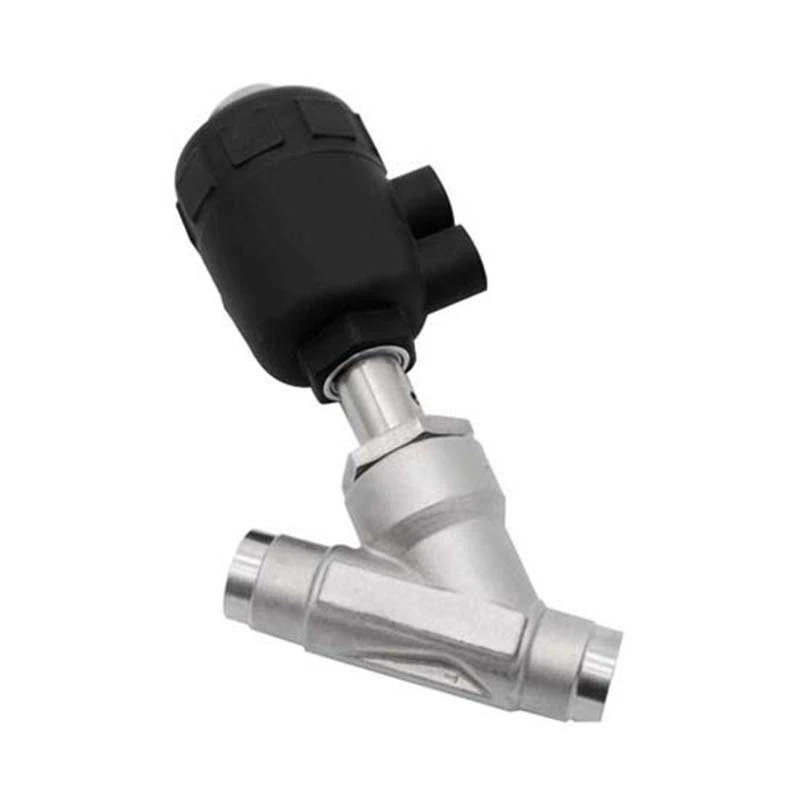Angle Seat Valve Principle
Angle Seat Valve can be categorized by cylinder type: single-acting and double-acting. All-stainless steel pneumatic threaded angle seat valves are single-acting (the pneumatic head typically has one hole) and double-acting (the pneumatic head typically has two holes). They operate based on a spring return mechanism to achieve opening and closing, and are classified as normally open or normally closed.
A pneumatic control valve consists of an actuator and a regulating mechanism. The actuator is the thrust component of the control valve, generating thrust in response to the control signal pressure, actuating the regulating mechanism. The valve body is the regulating component of the pneumatic control valve, directly contacting the regulating medium to regulate the flow rate of the fluid.
Pneumatic angle seat valves utilize compressed air to drive multiple pneumatic pistons within the actuator, transmitting force to the crossbeam and internal curved track, driving the hollow spindle to rotate. Compressed air is supplied to each cylinder, changing the inlet and outlet positions to change the spindle's rotational direction. The number of cylinders can be adjusted to drive the load (valve) based on the required torque. A two-position, five-way solenoid valve is typically used with double-acting pneumatic actuators. The two-position valve has two controllable positions: on and off. The five-way valve has five channels for ventilation: one connected to the air source, two to the inlet and outlet ports of the double-acting cylinder's external chamber, and two to the inlet and outlet ports of the internal chamber. For detailed operating principles, refer to the Working Principles of Double-Acting Pneumatic Actuators.
